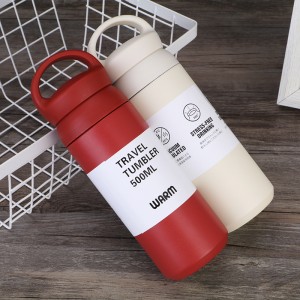In recent years, water cups made of 316 stainless steel have attracted much attention in the market, and their health and safety features have been emphasized in advertisements. However, we need to examine whether this propaganda is exaggerated from a more comprehensive perspective. This article will discuss the health and safety publicity issues of water cups produced from 316 stainless steel from different angles.
1. Nickel and health problems: 316 stainless steel contains a certain amount of nickel, although it is lower than 201 and 304 stainless steel, it may still cause nickel allergic reactions. Some people are allergic to nickel, and long-term use of water bottles containing nickel may cause skin allergies and other problems. Therefore, it may be inaccurate to promote that 316 stainless steel water bottles are absolutely harmless.
2. Unclear source of raw materials: The raw materials of 316 stainless steel used by different manufacturers may be different, and the quality is uneven. Some cheap water bottles may use substandard 316 stainless steel, which may cause the risk of excessive metal elements and pose a potential threat to health.
3. The impact of plastic accessories: The health and safety of water cups is not only related to the material of the cup body, but also to plastic accessories such as cup lids and cup spouts. These plastic accessories may release harmful substances, especially in high temperature environments. Even a 316 stainless steel cup body may pose potential risks to the user’s health if used in conjunction with low-quality plastic accessories.
4. Balance of corrosion resistance and durability: 316 stainless steel has relatively strong corrosion resistance, but at the same time, it is usually relatively hard. Stainless steel with higher hardness may be more difficult to shape during the manufacturing process, which may cause problems such as difficulty in welding and insufficient smoothness of the cup mouth. Therefore, producing 316 stainless steel water bottles requires a trade-off between corrosion resistance and durability, and some specific requirements may not be met at the same time.
To sum up, although the health and safety characteristics of 316 stainless steel water cups are better than other stainless steel water cups in some aspects, their publicity may contain some exaggerated elements. Consumers should maintain dialectical thinking when purchasing, understand the characteristics of materials and manufacturing processes, and choose water bottles from reputable and certified manufacturers to ensure their own health and safety. At the same time, for sensitive people, no matter what kind of material the water cup is made of, they should be carefully selected to avoid potential health problems.
Post time: Nov-13-2023
